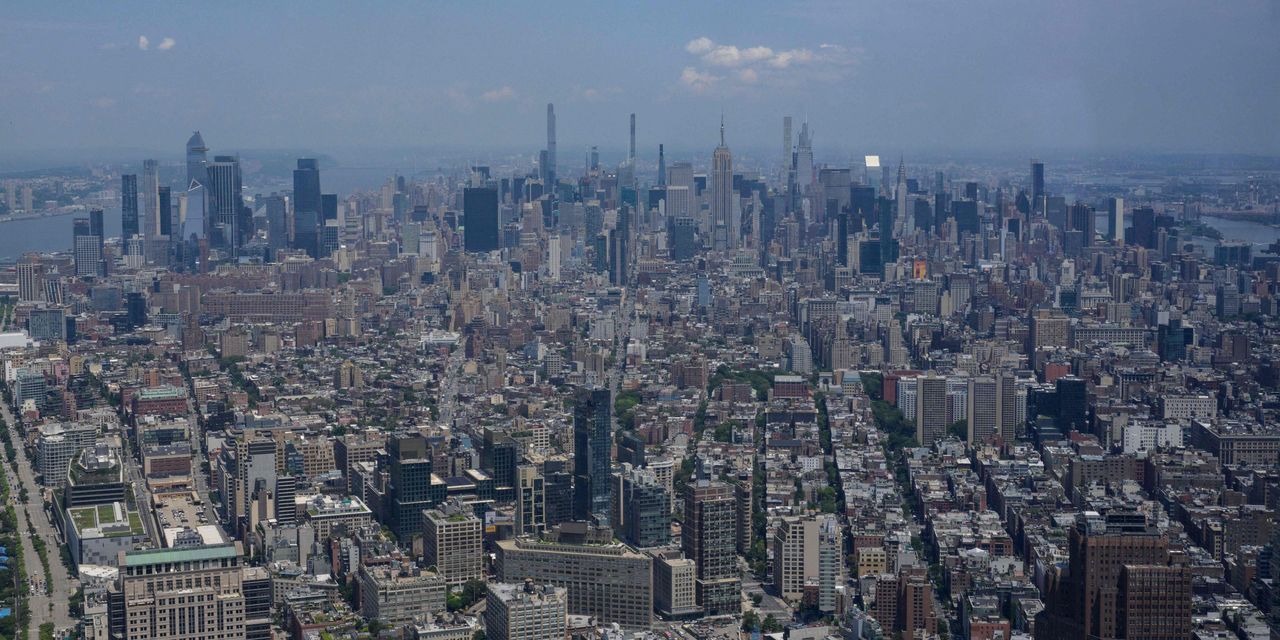Big-time landlords have begun surrendering office buildings and other struggling properties to lenders this year, when just a few years ago they were fetching sky-high values amid super-low rates.
Many consider it the start of a reckoning for the estimated $20.7 trillion commercial real-estate market, likely its biggest test of confidence since the 2007-2008 global financial crisis.
Brian Lane, the Well Fargo Investment Institute’s lead analyst for private credit, pointed to a $1 trillion “wall of worry” as a wave of commercial real-estate loans come due through the end of 2024 (see chart), in a Monday client note. The balance balloons to about $2.5 trillion through the end of 2027.
“Property owners are facing higher vacancy, reduced net operating income, falling prices and rising capitalization rates,” Lane wrote. “While valuations have started to decline in most property types, there is likely more downside.”
A recent McKinsey report pegged prices for office buildings as likely to fall as much as 42%,
Morgan Stanley analysts reiterated a call for overall commercial-property prices to drop 27.4% peak-to-trough through the end of 2024.
Lane expects many borrowers to resort to private-capital providers for loans, with banks and the commercial mortgage-backed securities market pulling back.
“We expect that private investors will be needed to provide debt financing, and that sponsors may be forced to infuse equity to protect holdings and right-size property deals.”
Furthermore, institutional investors in bonds haven’t given up on all commercial real estate.
Saira Malik, Nuveen’s chief investment officer, said that “nonoffice” commercial mortgage-backed securities that currently offer 10.6% yields look attractive relative to the roughly 5.5% yield on investment-grade corporate bonds and 3.87% 10-year Treasury yield
TMUBMUSD10Y,
in a Monday client note.
Despite regional-bank failures and ongoing challenges in the office sector, Malik pointed to climbing delinquency rates of about 2% on loans in bond deals as well below the 9% rate of the global financial crisis some 15 years ago.
She also said investors might consider commercial real estate for its higher yields and total returns, given a backdrop where the Federal Reserve is expected to soon end its most aggressive cycle of rate hikes in decades.
Read: Do Not Disturb: Tenants brace for more office landlords to go belly up on their property debts
Stocks rose on Monday, with the Dow Jones Industrial Average
DJIA,
up for its 11th straight session, ending at its highest level since February 2022, according to FactSet. The S&P 500 index
SPX,
closed 5% below its record close on Jan. 3, 2022.
Read the full article here





